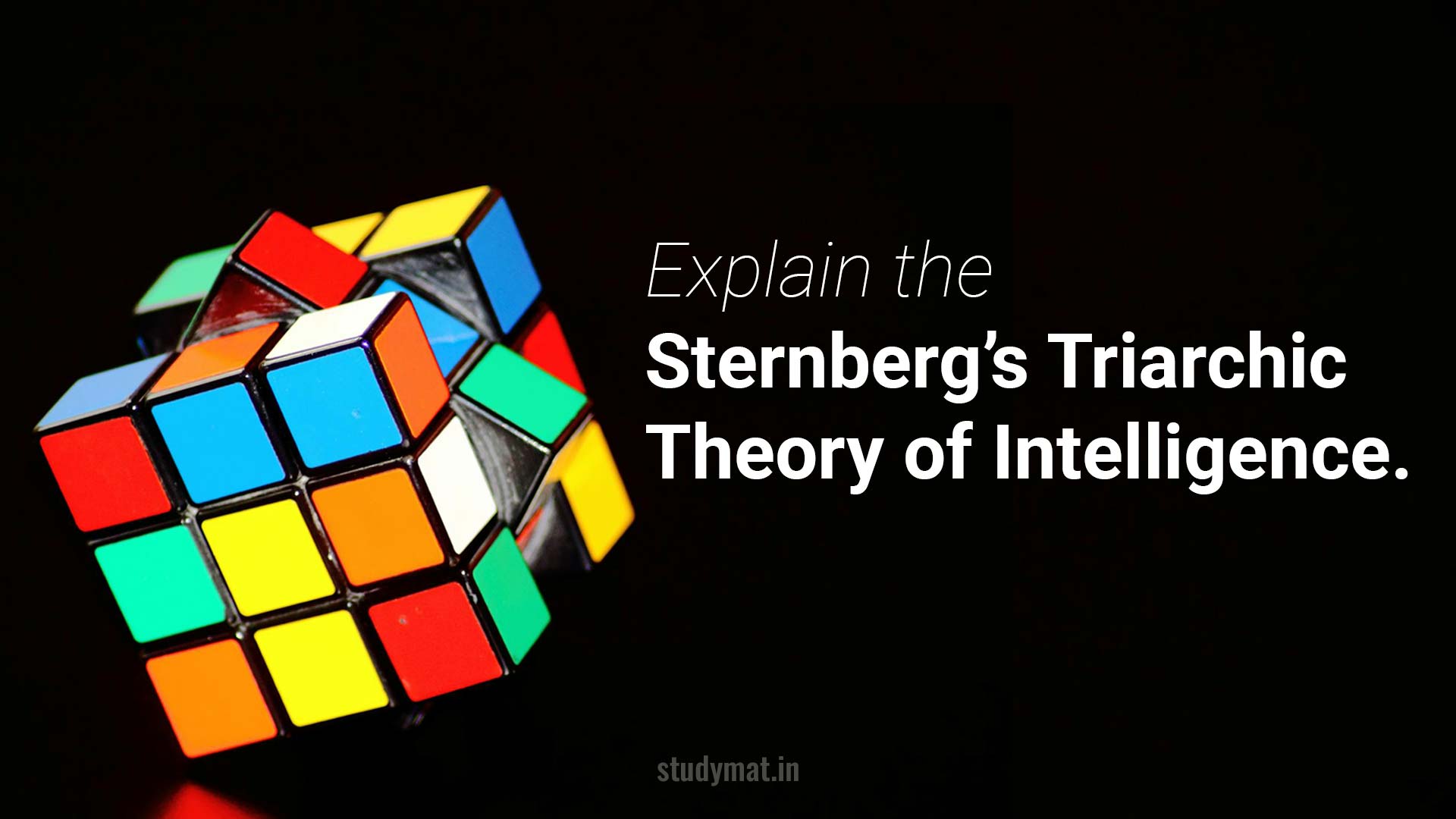In this article, we will Explain Sternberg’s Triarchic Theory of Intelligence.
What are the 3 parts of Sternberg’s Triarchic Theory?
Sternberg’s Triarchic Theory of Intelligence considers social and contextual factors alongside human abilities (Li, 1996). Unlike previous theories, Sternberg’s theory includes creative and practical intelligence in addition to analytic intelligence.
Analytic intelligence deals with clearly defined problems with a single correct answer, while practical intelligence involves recognizing and solving real-world problems with multiple solutions (Neisser et al., 1996). Individuals with high analytic intelligence excel at solving formulated problems, while those with high practical intelligence navigate real-world challenges effectively.
Sternberg’s theory comprises three sub-theories: Componential, Experiential, and Contextual. The Componential Sub-Theory explains the mental processes behind intelligent behaviour, while the Contextual Sub-Theory emphasizes adaptation to the environment. The Experiential Sub-Theory considers the level of familiarity with tasks or situations. According to Sternberg, understanding intelligence requires considering the interaction of these three sub-theories.
1. Componential or Analytical Facet or Subtheory
Analytical Intelligence involves completing academic problem-solving tasks with clear, single-correct answers. It reflects how individuals engage with their internal world and is based on metacomponents, performance components, and knowledge acquisition components.
Metacomponents oversee cognitive processing, organizing performance, and knowledge acquisition components. They analyze problems, select strategies, and make decisions.
Performance Components carry out strategies determined by metacomponents. They handle basic cognitive operations like encoding stimuli, memory retention, calculations, and information retrieval.
Knowledge Acquisition Components involve processes for acquiring and storing new knowledge, such as memorization strategies. These processes contribute to learning capacity.
2. Experiential or Creative Facet or Subtheory
The Experiential or Creative Facet of Intelligence involves effectively handling new and unusual situations by utilizing existing knowledge and skills. According to Sternberg’s Triarchic Theory of Intelligence, individuals with high creative intelligence may provide unconventional answers due to their unique perspectives. This facet encompasses insights, synthesis, and adaptability to novel stimuli, reflecting how individuals connect their internal world to external reality.
Sternberg categorizes the creative facet into two abilities: dealing with Novelty and Automating Processes. Novel situations are unfamiliar experiences, where adept individuals can find innovative solutions. Automation occurs when a process becomes routine and requires little conscious effort to perform. However, proficiency in one aspect doesn’t guarantee proficiency in the other.
3. Contextual or Practical Facet or Subtheory
Sternberg’s third sub theory of intelligence, Practical or Contextual focuses on adapting to everyday situations by utilizing existing knowledge and skills. Practical intelligence allows individuals to understand and meet the demands of specific environments through adaptation, shaping, and selection processes, often termed “street smarts.”
Adaptation involves adjusting oneself to the environment, like wearing extra layers of clothing in cold weather. Shaping entails modifying the environment to better suit one’s needs, such as implementing rules in a classroom. Selection occurs when individuals seek entirely new environments to achieve their goals, like immigrating for better opportunities.
According to Sternberg’s Triarchic Theory of Intelligence, intelligence arises from a balance of analytical, creative, and practical abilities. Analytical skills involve evaluating and comparing information, creative skills entail innovation and discovery, while practical skills allow for applying knowledge effectively. Success requires utilizing strengths and compensating for weaknesses, either by improving weak areas or selecting environments that match strengths. Adaptability within oneself and within socio-cultural contexts is central to successful intelligence according to the Triarchic Theory.
Evaluation
The Triarchic Theory of Intelligence offers a new perspective on human intelligence, capturing aspects not covered by traditional theories. It contrasts with Howard Gardner’s theory, which focuses on multiple independent bits of intelligence, and emotional intelligence theory. Instead of focusing on specific domains like Gardner’s theory, the Triarchic Theory emphasizes intelligence processes and separates emotions from intelligence. Integration of various theories may offer a more comprehensive understanding in the future.
Critics, like Gottfredson (2003), argue that the Triarchic Theory lacks empirical support. They find it unreasonable to suggest that traditional intelligence tests don’t measure practical intelligence, especially considering their correlation with income. Some claim that practical intelligence is simply a specific set of skills for specific tasks, not a broad cognitive aspect. Das (2004) highlights challenges in translating Sternberg’s theory into psychometric instruments. Additionally, a study questions whether creativity should be considered a separate cognitive ability or simply a result of high intelligence.
FAQ:
- What are the three Types of Intelligence according to Sternberg?
- What is the three Factor Theory of Intelligence?
- Discuss Sternberg’s Triarchic Theory of Intelligence with examples.
Follow Us:
If you like this article, you can Follow us on Facebook.
Also, you can Join our Official Facebook Group for QnA Sessions and Discussions with the worldwide IGNOU community

